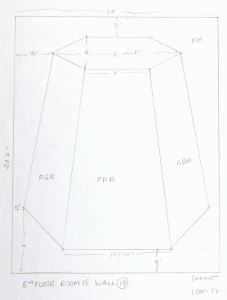
The Drawing Center - "The Drawing Center is the only not-for-profit institution in the country to focus on the exhibition of drawings, both historical and contemporary. It was established in 1977 to provide opportunities for emerging and under-recognized artists; to demonstrate the significance and diversity of drawings throughout history; and to stimulate public dialogue on the issues of art and culture."
Seeing is Believing - "Illustrations were essential in spreading new scientific and medical ideas and it was often the case that new developments in the sciences were accompanied by corresponding developments in illustrative techniques. These techniques are the subject of Seeing Is Believing, which complements an exhibition of the same name that was on view from October 23, 1999-February 19, 2000 at The New York Public Library's Humanities and Social Sciences Library."
Art & Science Collaborations, Inc. - "The intersection between art and science is an area that continues to be worthy of detailed exploration, and several organizations have been created in recent years to do just that. The Art & Science Collaborations group was started by artist Cynthia Pannucci in 1988 when she began to realize that there was a general lack of support for technology-based art across the United States. In the past 16 years the organization has expanded its mission to sponsor public events, panel discussions, and develop resources for artists working in this interesting area. The most compelling part of the site allows visitors to learn about artists who participate in the organization's activities, and also read about their various symposia and public projects in order to get a better sense of their very diverse set of perspectives. The Spotlight Archive will interest most visitors, as it features various developments in the field of visual arts that deal with aspects of technology from around the world, including selections from online journals." [KMG] (Scout Report)
Fusion of Form & Function, Art We Live In - "When it comes to clear buildings, composed with very few simple geometrical forms, numbers become a part of their esthetic. The most important aspect for these buildings is their proportion . . . . " (Mathematics of esthetics) - "They (the architects) aimed for a new definition of the basic values, the social as well as the esthetical. . . ." (Modern Architecture and its impact on social structures) - And more, from ThinkQuest - "From 2003-2013, the Oracle Foundation provided ThinkQuest, a comprehensive online learning platform and annual competition that engaged hundreds of thousands of students and educators globally. Visit the ThinkQuest Library archive to see the remarkable work that students authored throughout the program's history."(Oracle Education Foundation)
Proa Foundation - The Foundation is situated in one of the oldest neighborhoods of Buenos Aires. Specifically located in La Boca, the old house was recycled in 1996. The architectonic project was the adaptation of a typical Italian house to the requirements of a contemporary art center. Its three stories are very suitable for the displaying of exhibitions, video-library and concerts and also meet the requirements of today's artists.
QUOTE: - "We tend to structure our perceptions and to create frames of reference suitable for relating various observations to each other . . . ." (Loeb's The Architecture of Crystals) . . . . . .
NOTES: "Similarity of direction, orientation, continuance, or speed . . . . If points, lines, or shapes fall along a definite path, share the same kinetic energy or speed, or are long in general outline and are aimed in the same direction (like arrows), or even if they divide into two or more directional movements (as, for example, in choreography or team sports), the eye will establish immediate sense and order (the principle of orientation or 'good continuation') . . . . . The principles formulated by the German psychologist Max Wertheimer in the second and third decades of this century (the 20th) provide a useful guide to the ordering of sense data from the realm of light, space, form, color, texture, and movement. Wertheimer's most cited contribution to Gestalt psychology (sometimes called configurationism) was the identification of four principles by which the organs of sight create order out of what would otherwise be optical chaos. According to his findings, objects, shapes, figures, and qualities are related to one another perceptually by: Principles of Proximity, Similarity, Orientation, and Closure . . . . " - (Gestalt Theories - In Harlan's 'An Introduction to Art Fundamentals')
THE WORK FEATURED ABOVE: Sol LeWitt's working drawing for Wall Drawing #938: Flat Top Pyramid [San Francisco Museum of Modern Art installation - 5th floor, room 15, wall 19), 1999. The working drawing is Graphite on vellum, 12 in. x 9 in. (30.48 cm x 22.86 cm). Collection of the San Francisco Museum of Modern Art (SFMOMA). Gift of the artist 2000.467 c -Sol LeWitt / Artists Rights Society (ARS), New York - View more work by this artist: Sol LeWitt en Fundación Proa
. . . . . . . MUSIC: The Soundtrack for 'Mission Impossible' from Neil Strawbridge Presents TV's Greatest Hits
Be sure to click on the image provided above.
Any reference or link obtained from this site to any other specific site, document, commercial product, process, or service does not constitute or imply an agreement, association, or an endorsement by this site of the product, process, or service, or its producer or provider. The views and opinions expressed in any referenced document do not necessarily state or reflect those of 'In View', however this site is selective of those references and links it considers appropriate for an exchange with others. The contents of this site, including all images and text, are for personal, educational, non-commercial use only. The contents of this site may not be reproduced in any form without proper reference to Text, Author, Publisher, and Date of Publication [and page #s when suitable].
Your ideas and suggestions are welcome and will be taken into consideration: InView@noteaccess.com